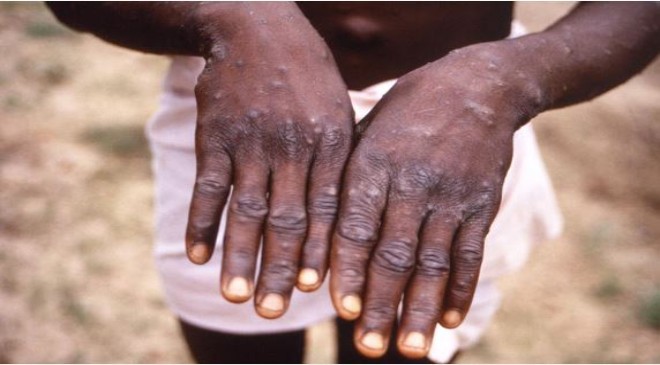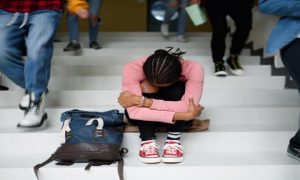Nearly 1,500 Americans have been infected with monkeypox since early May, and the federal government is working to provide additional vaccines to stem the widening outbreak, Dr. Rochelle Walensky, director of the Centers for Disease Control and Prevention said in a news conference Friday.
Globally, more than 11,000 people have been confirmed infected in 65 countries since the end of April, many of them in Europe. In the U.S., nearly all are men who have sex with men and have a median age of 36, Walensky said.
Despite efforts to contain the outbreak, she expects to see an increase in cases in the coming weeks as testing and awareness increase.
Vaccines have been in short supply in cities such as San Francisco. But the CDC and Food and Drug Administration are working to make more doses available. As of Thursday, the CDC had distributed 156,000 doses of the Jynneos vaccine to states, and an additional 86,000 will be available as soon as early next month.
Patients and doctors also have been complaining about a lack of access to the one antiviral available, tecoviromat, commonly called TPOXX. The drug is officially approved to treat smallpox but is believed to be effective against monkeypox.
“I’m optimistic that some of the challenges that are more acute right now will be addressed and lessened,” said Jen Kates, senior vice president and director of global health and HIV policy at the Kaiser Family Foundation. “I’m pessimistic that we’re not going to see a lot more spread and this isn’t going to become a much more serious issue. All the signs are pointing in that direction. I’d like to be wrong.”
What is monkeypox?
Monkeypox, a cousin of smallpox but far less lethal, causes painful blisters that can leave lifelong scars. So far only one death has been reported in the current outbreak. It has long been endemic in parts of Africa, including Nigeria, but had caused only rare, sporadic cases outside the continent. Since February 2020, Africa has documented 12,141 cases and 363 deaths from monkeypox.
Symptoms have been somewhat different in this outbreak, with smaller lesions concentrated in fewer parts of the body, Dr. Mary Foote, medical director of New York City’s Department of Health and Mental Hygiene, said at a news conference Thursday sponsored by the Infectious Disease Society of America. Sometimes the pus-filled sores can look like mild rashes, while in other cases they can be debilitating, she said.
How contagious is monkeypox?
Monkeypox is passed person-to-person through close, intimate contact, or by touching material like sheets or clothing used by a contagious person.
Texbooks would say someone has to have lesions to be contagious, said Dr. William Schaffner, an infectious disease specialist at Vanderbilt University Medical Center. “But this virus has behaved differently than the textbook,” and it remains an open question whether someone can be contagious sooner.
Patients might have so few lesions that they don’t notice, he said. Firm and rubbery, the blisters can quickly fill with pus and become cloudy, he said. They are firmer than chicken pox blisters or those someone might get on their feet with tight shoes. After a few days, the blisters often develop a dimple in their center, he said, and generally last two to three weeks. A patient remains contagious until the blisters dry up.
Right now, the virus is circulating almost entirely among men who have sex with men. Officials are concerned that if public health measures can’t contain the virus soon, it will continue to spread and could soon infect a broader population.
Is testing readily available?
Testing has been a huge bottleneck, just as it was in the early days of the COVID-19 pandemic, though supply has recently expanded substantially. The system, which now includes commercial testing labs, can handle 70,000 tests a week, up from 6,000 just a few weeks ago.
The lab network has seen a 76% increase in the number of tests since July 6, Walensky said.
Tests are conducted on pus from lesions, but the CDC is exploring the possibility of tests based on saliva, throat swabs and blood tests, she said.
Tests conducted by the government are provided free, but commercial companies charge, so only those with insurance can afford them.
The testing landscape is improving, but access is still a problem, Kates said. “It’s not yet to the point where testing is widely available to those who need it.”
What about vaccines?
A two-dose vaccine called Jynneos is available, but there is not enough for everyone at risk who wants protection.
“We have the vaccine. We can administer it. The critical issue right now is supply,” Foote said.
People are lining up around the block in San Francisco and are being turned away because of limited supply, but availability seems better in Boston.
“We ran out of our first batch of vaccines very quickly, but the Massachusetts Department of Public Health was able to deliver another batch earlier this week and we expect regular deliveries moving forward,” said Chris Viveiros, director of communications at Fenway Health, a community health center in Boston.
The vaccine can be given before or after exposure to the virus, but it is most effective in preventing disease if given within the first four days of exposure, Foote said. Given five to 14 days after exposure, it may prevent severe disease but not infection, she said.
It is also believed to help prevent spread of the disease, which is why it’s important to get it out into the community, she said.
By mid-2023, the government will receive 7 million doses of Jynneos.
Dr. Peter Marks, a top FDA official, said in Friday’s news conference that he strongly recommends people get both doses of the vaccine and promised there would be enough.
“A single dose of this vaccine will not provide the kind of protection that is necessary over time,” he said.
Another vaccine, ACAM2000, has been stockpiled by the government, but it is not considered as safe as Jynneos, so it has not been widely used.
Why has it been hard for people to access treatments?
Bureaucratic challenges have made it difficult for patients to access the one available treatment, tecoviromat, commonly called TPOXX, which targets a protein on the surface of the virus and slows viral replication.
The drug has been approved to treat smallpox but not monkeypox, so doctors have complained about the red tape involved with prescribing it. In animal models, TPOXX prevents 90% to 100% of deaths from monkeypox, but it has not been widely tested in people, Foote said. Patients getting it now should be assessed as part of a formal clinical trial, she added.
Many doctors have been forced to spend 1½ to three hours per patient filling out paperwork, Foote said, delaying treatment and limiting availability to those who can access academic medical centers in major cities.
The difficulty in accessing testing and treatment means it can take days for people to get proper care, she said, leaving some unable to eat or use the bathroom without “excruciating” pain, and at risk of permanent scarring.
“This isn’t just semantics,” Kates said. “Monkeypox can be very painful, and people are suffering.”

What can the public do?
For the first time in the outbreak, officials are saying men who have sex with men need to play a role in containing the outbreak.
Avoiding sex with multiple partners and wearing a condom are important for limiting the viral spread.
“We understand the need to socialize, but we all can take part in preventing the spread,” Dr. Lilian Abbo, an infectious disease specialist at the University of Miami Health System, said in the news conference Thursday.
Public health officials need to be very clear with men who have sex with men, Schaffner said, about not going to “raves” and having anonymous sex. “If you do that, you’re opening yourself up to infection,” he said. “If we can’t vaccinate everybody, we’re going to have to ask everybody to behave in a more restrained way.”
What comes next?
The World Health Organization is meeting July 21 to decide whether the outbreak should be considered a Public Health Emergency of International Concern, which could lead more resources to be devoted to fighting the disease. COVID-19 has been considered a public health emergency since March 2020.
Why does this feel like deja vu all over again?
The American public health system has been stretched thin by years of limited funding and the battle against COVID-19. Public health is generally left with the states, meaning response to outbreaks varies by jurisdiction.
As with the COVID-19 fight, experts say, it has been hard to get ahead of the monkeypox outbreak because of limited testing and access, as well as data and communication gaps. Not all health care providers are aware of monkeypox and its symptoms, so people aren’t being diagnosed and don’t know to avoid close contact with others.
“I don’t think this is going to be a pandemic, but we are stymied by some of the same things that stymied us at the beginning of the coronavirus,” said Dr. Julie Gerberding, CEO of the Foundation for the National Institutes of Health and a former CDC director.





























